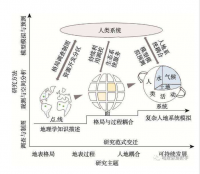中西方面子观差异对比分析 以电影《喜宴》为例
Comparative analysis of the differences between Chinese and western face values
In the movie "the wedding banquet" as an example
Abstract
Politeness is a kind of social phenomenon, is shared by all groups in society, but it is also a kind of personalized communication strategies, with different language groups with different backgrounds vary. Differences between Chinese and Western culture determines the west "face" of cultural difference, the difference is mainly manifested in the concept, content, mechanism and embodies the values. We should understand these differences so as to be able to carry out cross cultural communication successfully. The movie "the wedding banquet" as an example, describes the differences between Chinese and Western concept of face, and puts forward effective suggestions.
Key words: face concept, cultural differences, suggestions
摘要
礼貌是一种社会现象,为各社会群体所共有,但它又是一种个性化的交际策略, 随着不同语言群体的不同背景而有所不同.中西方文化的差异决定了中西方“面子”文化的差异,差异主要表现在概念上、内容上、机制上以及所体现的价值观上。我们应了解这些差异,以便能顺利地进行跨文化交际。本文通过电影《喜宴》为例,阐述了中西方面子观的差异,并提出实际有效的建议。
关键词:面子观,文化差异,建议
Catalog
Abstract 1
Catalog 2
Introduction 3
1 literature review 4
2 face meaning 5
3 from the movie "the wedding banquet" embodies the Chinese and Western culture in different face values 6
3.1. face in western culture 6
3.2. face in Chinese culture 7
3.3 differences between Chinese and western face 8
3.3.1 historical origin 8
3.3.2 "face" of Chinese and Western cultural differences 9
4 Face strategies in different cultural backgrounds 12
4.1 words and deeds should be according to their own identity and status 12
4.2 choose the right language form. 13
4.3 choose the right face skills 14
4.4 to meet the needs of the listener's negative face. 14
4.5 meet the positive face of the hearer's requirements. 15
4.6. avoid blunt, not directly touch the hearer's face. 16
5 Conclusion 18
reference: 19
Introduction
In English and Chinese, both of the two kinds of language express politeness. But face the problem and social factors to consider when people communicate with each other. People should not only try to maintain their own face, but also always pay attention to other people's face is not compromised. The face is the people in social psychological reality, while maintaining face is the ultimate goal of verbal communication, and is a common language phenomenon. However, on the face of the two kinds of language understanding and how to effectively cooperate face of both sides is different.
reference:
[1]Brown, G, Levinson, universals of language usage:politeness phenomena[M].Combridge University Press.1978. S.Some
[2] Huang Guangguo, Hu Jin. The first face [M]. Beijing: Renmin University of China press, 2004
[3]. Jia Yuxin. Cross cultural communication [M]. Shanghai: Shanghai foreign language education press, 1997
[4]. he nature, Ran Yongping. An introduction to pragmatics [M]. Changsha: Hunan Education Press, 2001
[5].Mao, politeness theory: L.M.R.1994.Beyond '' 'revisited' and Face renewed.J Ou rnal of P ragm atics.V.21
http://www.bysj1.com/ http://www.bysj1.com/html/5215.html http://www.bysj1.com





























